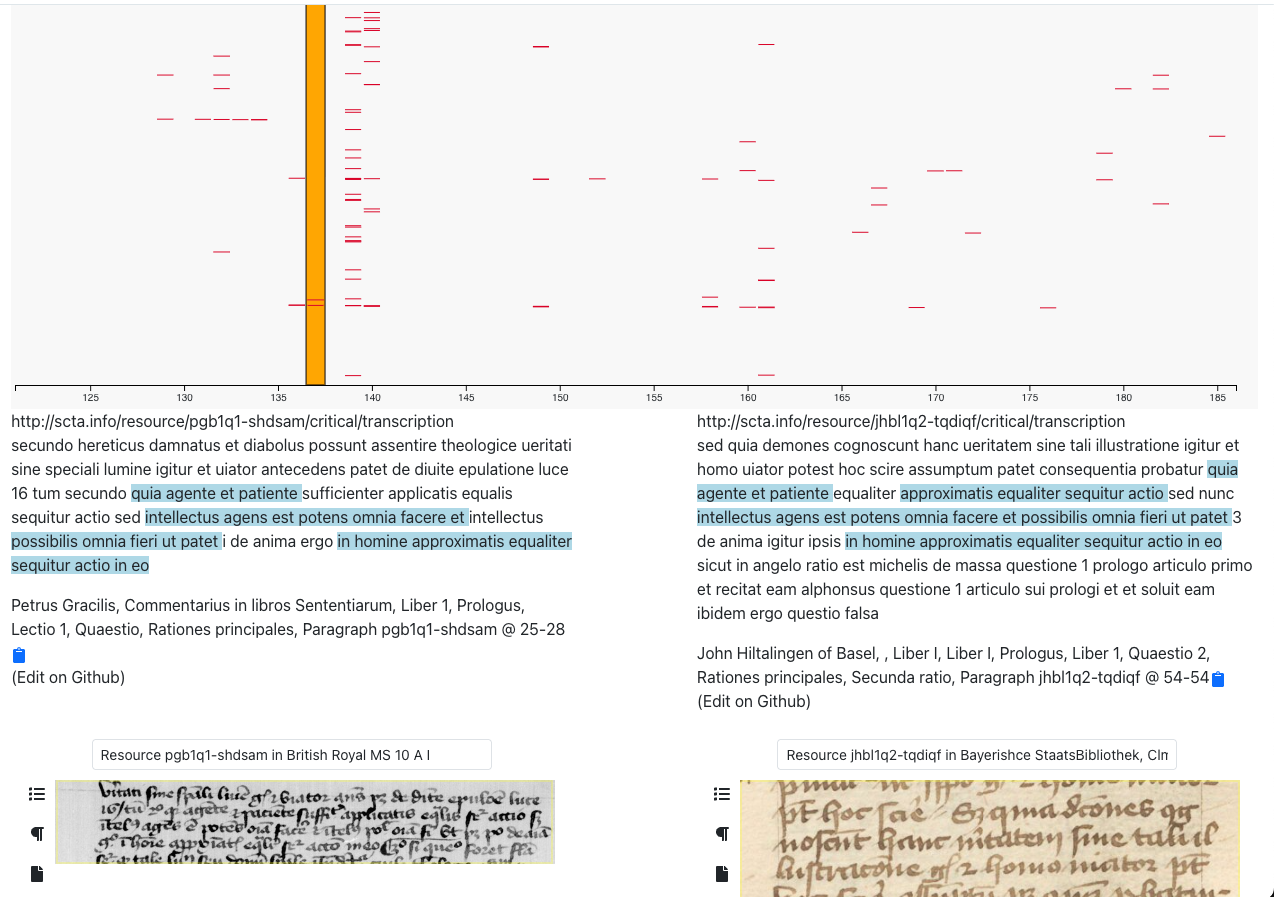Worlds of Learning -- Re-Connecting Scholastic Worlds
Jeffrey C. Witt (Loyola University Maryland)
https://jeffreycwitt.com | jcwitt@loyola.edu
@jeffreycwitt
July 10, 2025, University of Leeds, Leeds, UK
Slide Deck: http://jeffreycwitt.com/slides/2025-07-10-leeds-connecting-worlds

"Bag of N-Grams Model"
Paragraph | 4gram1 | 4gram2 | 4gram3 | 4gram4 | 4gram5 | 4gram6 | 4gram7 | 4gram8 | 4gram9 | 4gram10 | 4gram11 | 4gram12 |
Doc A | 1 | 1 | 0 | 1 | 0 | 1 | 1 | 1 | 0 | 0 | 1 | 1 |
Doc B | 1 | 1 | 1 | 0 | 1 | 1 | 1 | 1 | 0 | 1 | 1 | 1 |
Dot Product Vector | 1x1=1 | 1x1=1 | 0x1=0 | 1x0=0 | 0x1=0 | 1x1=1 | 0x0=1 | 1x1=1 | 0x0=0 | 0x1=0 | 1x1=1 | 1x1=1 |

| ||5|6|7|8|9|10|11|12| |---|---|---|---|---|---|---|---|---|---| |2|0|0|0|0|0|0|0|0| |3|0|0|**0**|**0**|**0**|**0**|0|0| |4|0|0|**0**|**1**|**0**|**0**|0|0| |5|0|0|**0**|**0**|**1**|**0**|0|0| |6|0|0|**0**|**0**|**0**|**1**|0|0| |7|0|0|0|0|0|0|0|0| |8|0|0|0|0|0|0|0|0| |9|0|0|0|0|0|0|0|0| |
| ||5|6|7|8|9|10|11|12| |---|---|---|---|---|---|---|---|---|---| |2|0|0|0|0|0|0|0|0| |3|0|0|**0**|**0**|**0**|**0**|0|0| |4|0|0|**0**|**1**|**0**|**0**|0|0| |5|0|0|**0**|**0**|**1**|**0**|0|0| |6|0|0|**0**|**0**|**0**|**1**|0|0| |7|0|0|0|0|0|0|0|0| |8|0|0|0|0|0|0|0|0| |9|0|0|0|0|0|0|0|0| | X |
||||| |---|---|---| |1|0|0|0| |0|1|0|0| |0|0|1|0| |0|0|0|1| | = |
||||| |---|---|---|---| |0|0|0|0| |0|1|0|0| |0|0|1|0| |0|0|0|1| | = |
3 |
"However, document Z4Yt34-d1e1156-d1e963, written by Melchor Cano, presents a more nuanced view of infidelity, arguing that it can be understood in three ways: as a pure negation of faith, as a contrary position to faith, or as a middle ground between the two. According to Cano, only the second type of infidelity, which involves a deliberate rejection of faith, is considered as a sin."